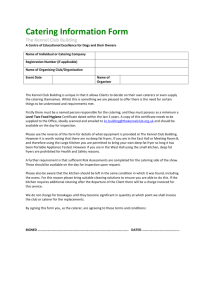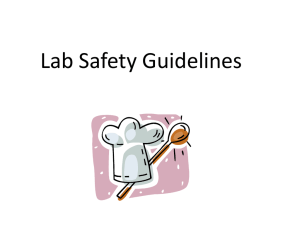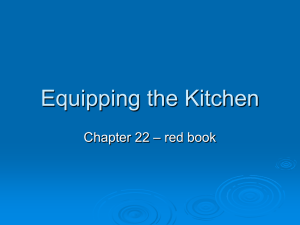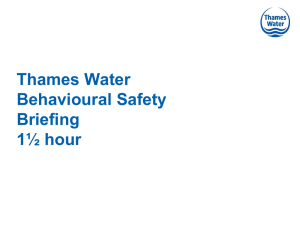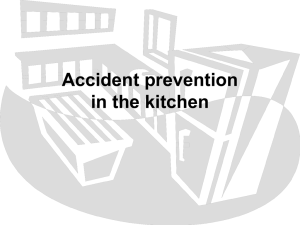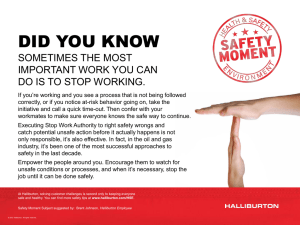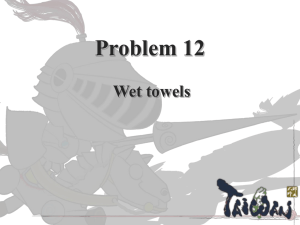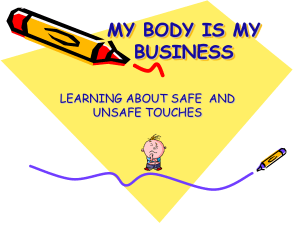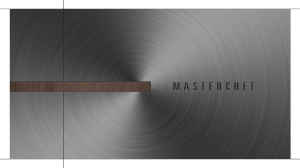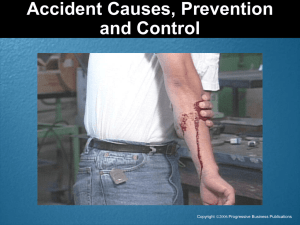Kitchen Safety
advertisement
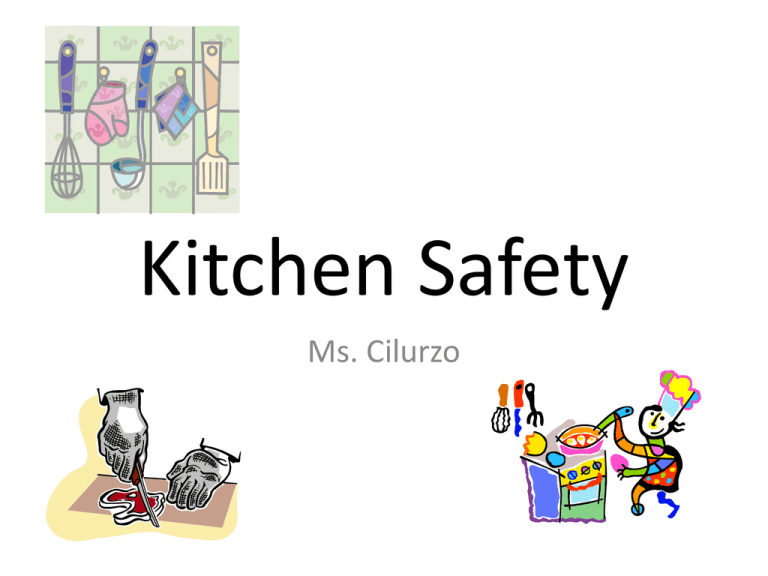
Kitchen Safety Ms. Cilurzo Objectives Students will: • determine and practice good safety habits. • name and explain uses for equipment in the lab. • develop a Time/Work Schedule for recipe preparation. • practice proper measuring techniques. • understand how to change the yield of a recipe. • identify common food borne illnesses and their prevention in food preparation. • identify proper placement of all tableware based on course served. Essential Questions 1. Why is kitchen safety essential? 2. Explain methods of accident prevention from cuts, burns, fires, falls, shock and poisoning. DO NOW: • Read Chapter 21 “Preventing Kitchen Accidents” pages 297-303. • Answer on page 304 under “Check Your Knowledge” questions 1-8, 10, 12, 16 and 18 on a separate piece of paper. General Rules • Follow ALL instructions. • EVERYDAY when you come into the classroom, you must leave your backpacks at the front of the room • Know the location of emergency equipment (first aid kit, fire extinguisher). Know where key telephone numbers are located. • Report all accidents to the teacher IMMEDIATELY. • Know what to do if there is a fire drill during a lab period; all equipment and appliances must be turned OFF before leaving the room. General Rules • Conduct yourselves in a responsible manner at ALL times in the lab. • Never fool around in the lab. Horseplay, practical jokes, and pranks are dangerous and prohibited. You will be penalized if this occurs. • You must stay in your labs and not wander around the room, or distract other students • When using knives and other sharp objects, always carry with points pointing down and away. • Always cut away from your body and never try to catch a falling sharp object. Clothing • • • • Dress properly during labs No loose clothing, dangling jewelry Roll up sleeves, tie back long hair Wear an apron during labs Accidents and Injuries • Report any accident (spill, breakage, etc.) or injury (cut, burn, etc.) to the teacher immediately. • If a cleaning chemical should splash in your eye(s) or on your skin, immediately flush with running water and notify the teacher ASAP. Handling Glassware and Equipment • Never handle broken glass with your bare hands. • Use a dustpan to clean up big pieces of broken glass and place it in the designated glass disposal container. For small pieces, use a wet paper towel. • When removing an electrical plug from its socket, grasp the plug, not the electrical cord. • Hands must be completely DRY before touching an electrical switch, plug, or outlet. • Report damaged electrical equipment IMMEDIATELY and never use it. Heating Substances • Use extreme caution when using an electric or gas burner. Take care that hair, clothing, and hands are a safe distance from the flame. • NEVER reach over an exposed flame. • Never leave a lit burner unattended. • Always turn the burner off when not in use. • Heated metals and glass remain hot for a long period of time. They should be set aside to cool and then can be picked up with pot holders • Pot handles should be turned to the side Cleanliness and Sanitation • Wash your hands with soap and warm water before and after ALL labs. • Use separate towels for drying your hands and for wiping dishes and utensils. • Paper towels are used ONLY for hands and to clean up spills immediately • Sponges are ONLY used to clean kitchen utensils/equipment • Dish towels are ONLY used to dry utensils/equipment. • Wash work surfaces thoroughly EMERGENCY PROCEDURES • FIRES: – For fires in POTS and PANS, turn off heat source and cover the pan lid or smother with salt or baking soda – Use a fire extinguisher for small fires – If clothing or hair ignites, wrap victim in fire blanket or other heavy fabric and roll him or her around on floor to smother flames (stop, drop, and roll) EMERGENCY PROCEDURES • Injuries – For CUTS, apply pressure to the wound with a paper towel and clean towel. If bleeding badly, raise the bleeding part of the body. – For minor BURNS, cool the affected area under cold water. – For ELECTRICAL SHOCK, do NOT touch the person in contact with electricity or you will get shocked as well. Break the electrical connection with a nonconductor, such as a wooden broom handle EMERGENCY PROCEDURES • For SEVERE INJURY, BURNS, FALLS, OR FOR SHOCK, do NOT let the person walk anywhere. If the person has signs of shock (dizziness, faintness, or sweating with cold moist skin) have the person lie down with feet raised. Preventing Burns • Stand to one side when opening oven door • Use oven mitt or pot holder when taking out hot items. Never use a wet pot holder • Clean up spills right away • Open lid of a pot away from you • Pot handles should be turned to the side Preventing Falls • Clean up spills right away • Tie your shoe laces • Never use a chair, it is not study. Always use a step stool. Microwave Safety • • • • No metal objects can be put in the microwave No Styrofoam can be put in the microwave No tin foil ONLY safe microwavable glass dishes can be put in the microwave (ex: pyrex cups) Safe or Unsafe? 1. Use a towel to remove a pan from the oven. 2. Pour salt or baking soda over the flames of a grease fire. 3. Wipe up spills on the floor right away. 4. Pour water on a grease fire. 5. Tie back long hair. 6. Climb up on the counter to get items from the top shelf. 7. Use electric appliances with wet hands. 8. Wearing loose clothing while working in the kitchen. 9. Cut away from your body when using a sharp knife. 10. Keep cabinet doors open so everything is in easy reach. How much do you already know about kitchen safety? For each question below, decide whether the practice is safe or unsafe. UNSAFE 1. Use a towel or your apron to remove a pan from the oven. SAFE 2. Pour salt or baking soda over the flames of a grease fire. SAFE 3. Wipe up spills on the floor right away. UNSAFE SAFE 4. Pour water on a grease fire. 5. Tie back long hair. UNSAFE 6. Climb up on the counter to get items from the top shelf. UNSAFE 7. Use electric appliances with wet hands. UNSAFE 8. Wearing loose clothing while working in the kitchen. SAFE UNSAFE 9. Cut away from your body when using a sharp knife. 10. Keep cabinet doors open so everything is in easy reach.
